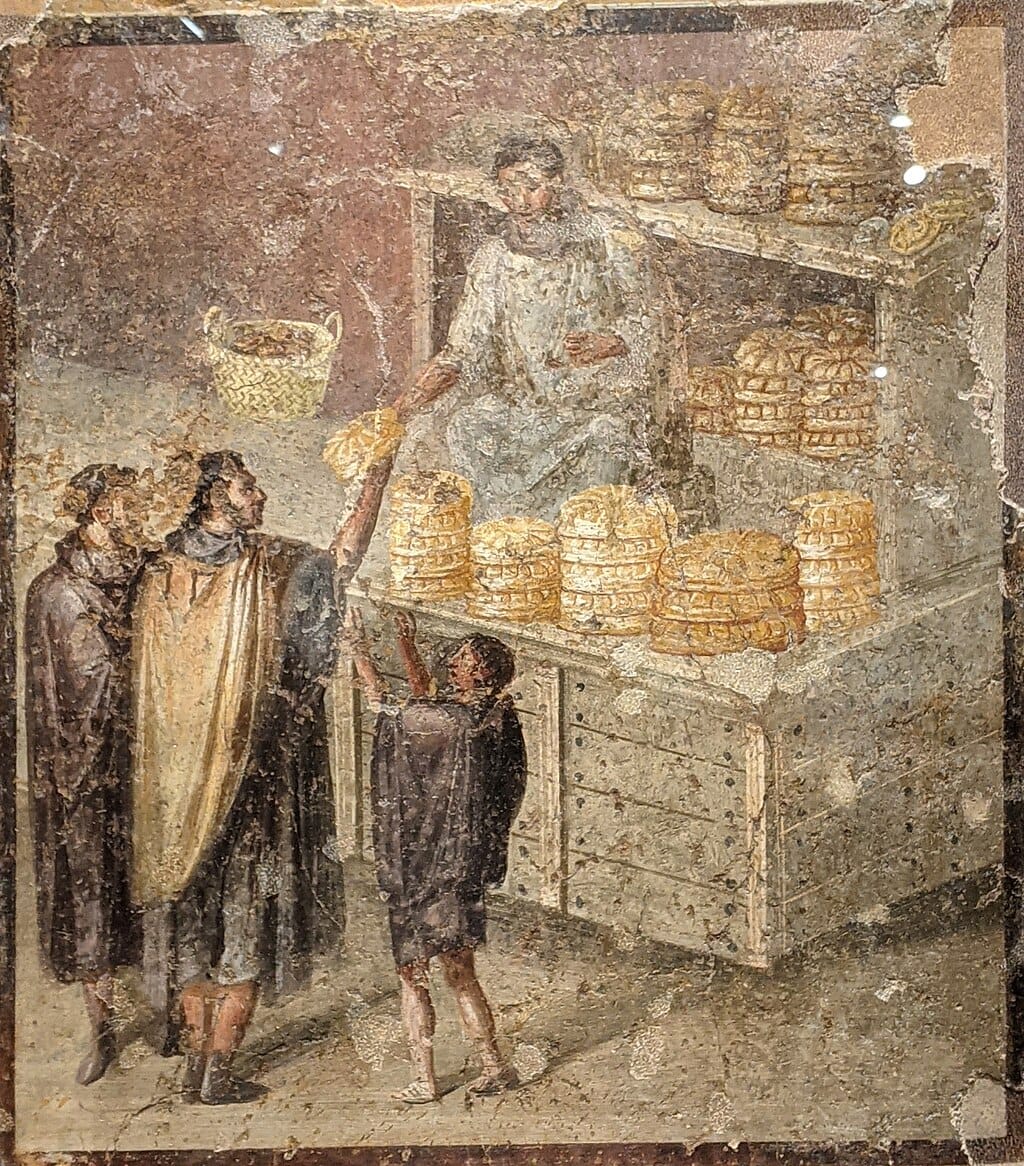The Bakery

Bread is the king of the table and all else is merely the court that surrounds the king. ... With bread all sorrows are less.
– a wise philosopher known as Sancho Panza
I enjoy cozy, welcoming cafes, with the aroma of brewing coffee, but the aroma in bakeries is even better. This post is a selection of paintings of bakeries and bread through the centuries and I'm focusing on Europe because the breads there are so much better than in the U.S. I like the nostalgic image above by 20th century Dutch postcard and book illustrator Anton Pieck, whose work is often criticized as kitsch, but who cares? He was the first designer for the famous Dutch theme park Efteling and my hunch is that his art inspired the look of Hayao Miyazaki's Kiki's Delivery Service.
The following paintings jump back a hundred years or so each time. The first two are Swedish from the late 19th century. What I like here is the idea that the younger generations are learning the craft of baking, something we moderns are not doing very well.
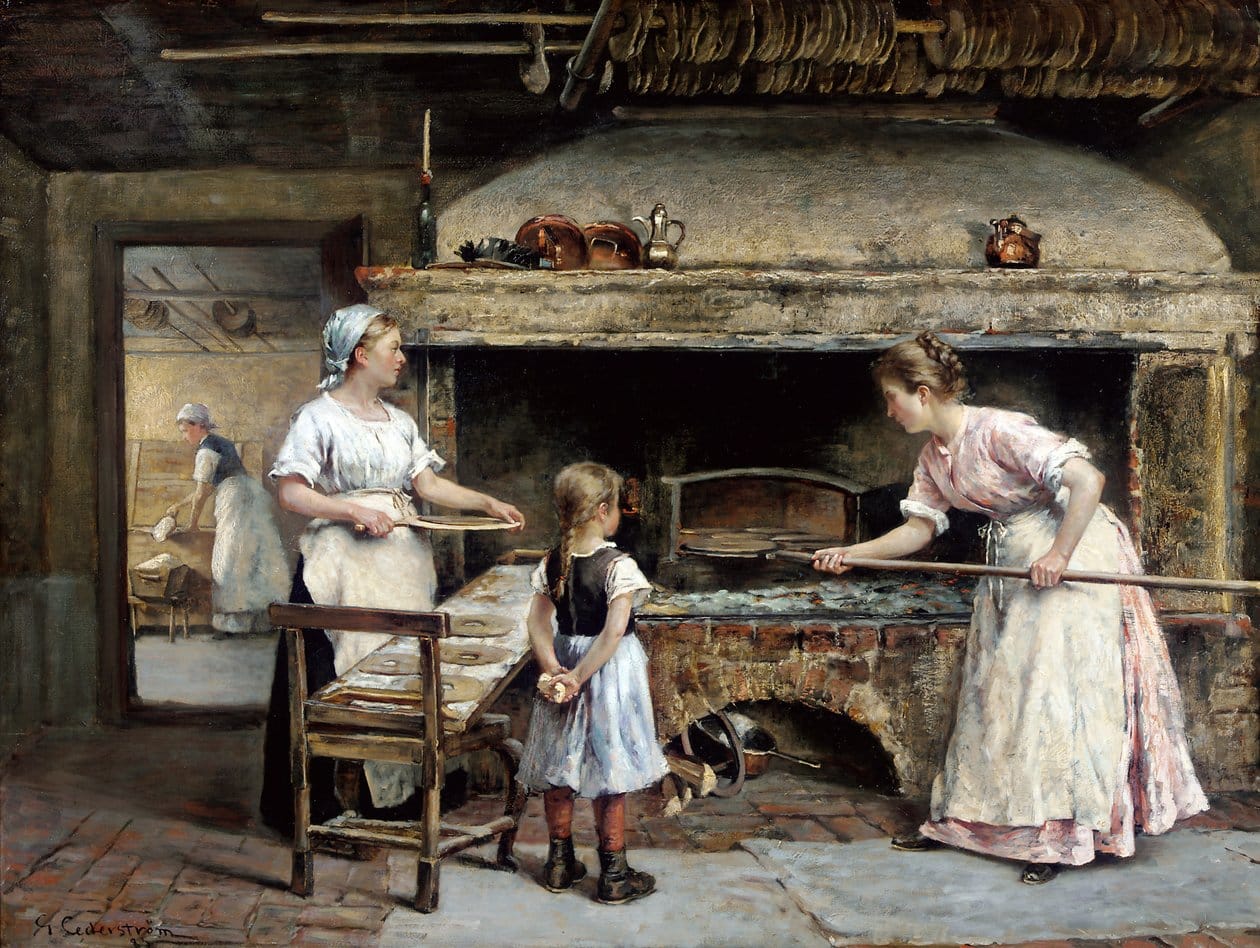
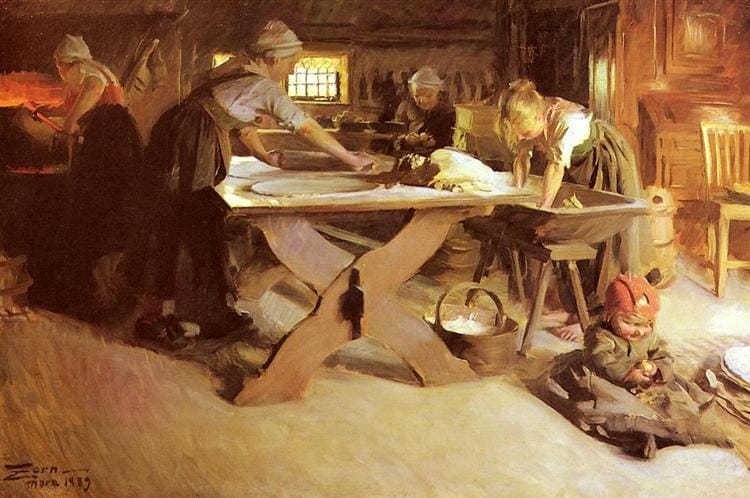
Bakeries in the U.S. are often vented to remove the baking smells, something I've never understood. Aroma is key to the experience: the dough, butter and cinnamon wafting through the air is the best form of advertising. I get almost the same pleasure from cafes, breweries and wineries - as long as everything is fresh.
Now to Italy a century earlier. The artist is unknown and - apparently - so are the buns they are making.

Then there is Vermeer whose skill with light, the angles and perspective, the character and, of course, the bread, are perfect, although the further away from the bakery we get, the weaker the aroma.
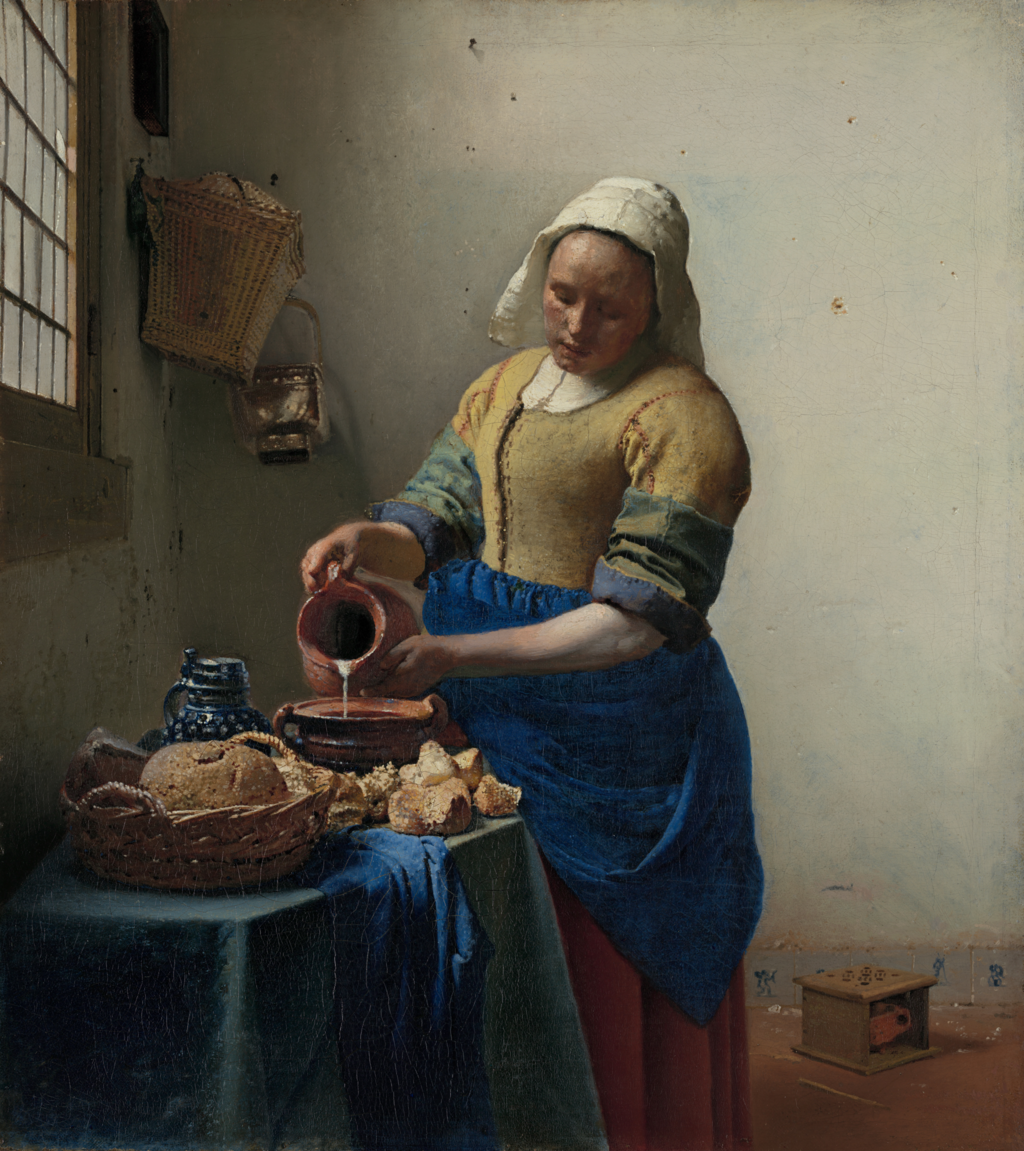
Bread pops up in Catholic charitable giving. Below is one of Franz Francken the Younger's paintings in "The Seven Works Of Mercy" series, this one being feeding the hungry.
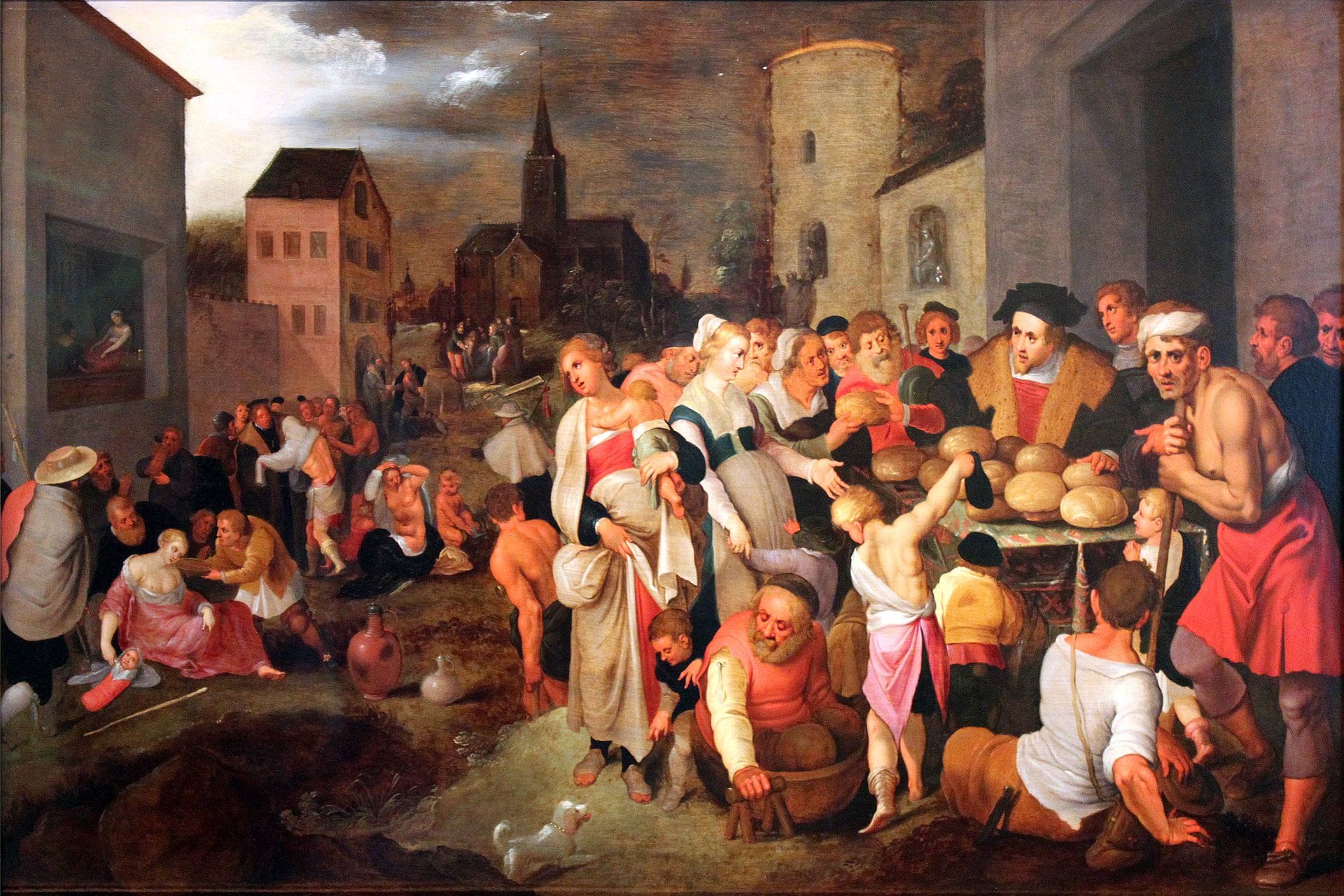
As others have noted, in the Dutch painting below, they appear to be servants eating simple pancakes and waffles, and they are not happy about it when they compare their food with the lavish dinners of the wealthy people they work for.
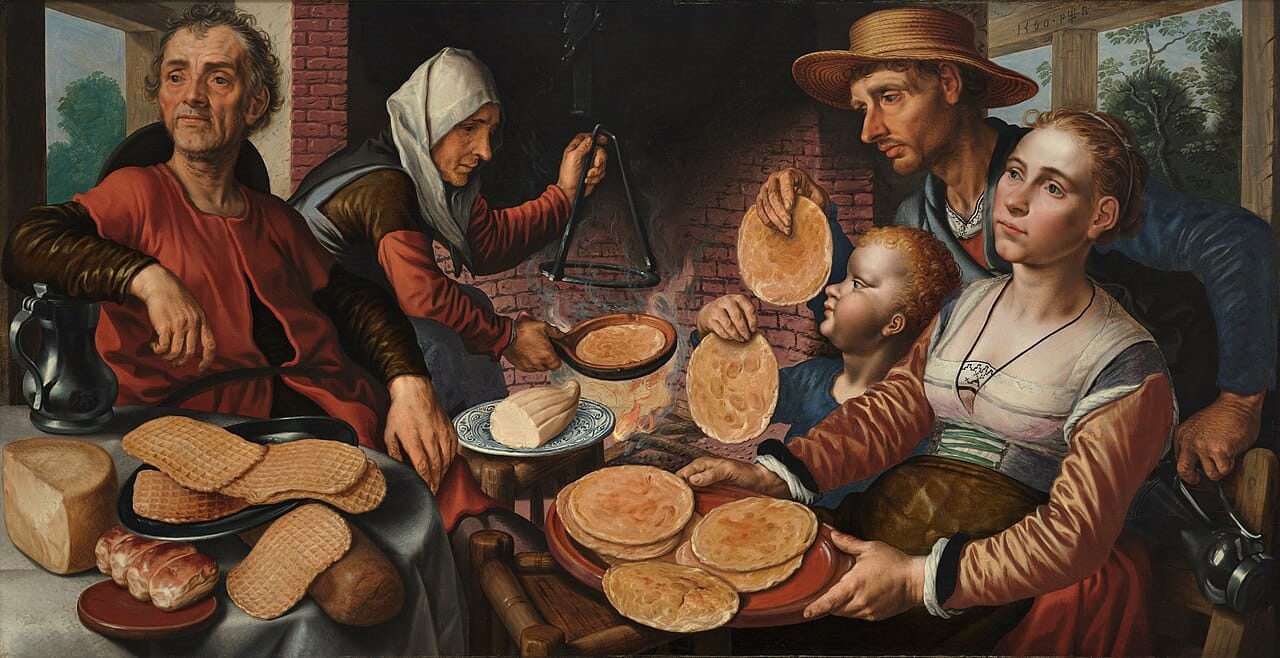
We get the expression "the upper crust" from medieval bakeries like the one shown below. The bottom of the bread was usually black, which would not have pleased the lords and ladies, so the bottom was sliced off and they ate the "white" part, while the servants got the rest.
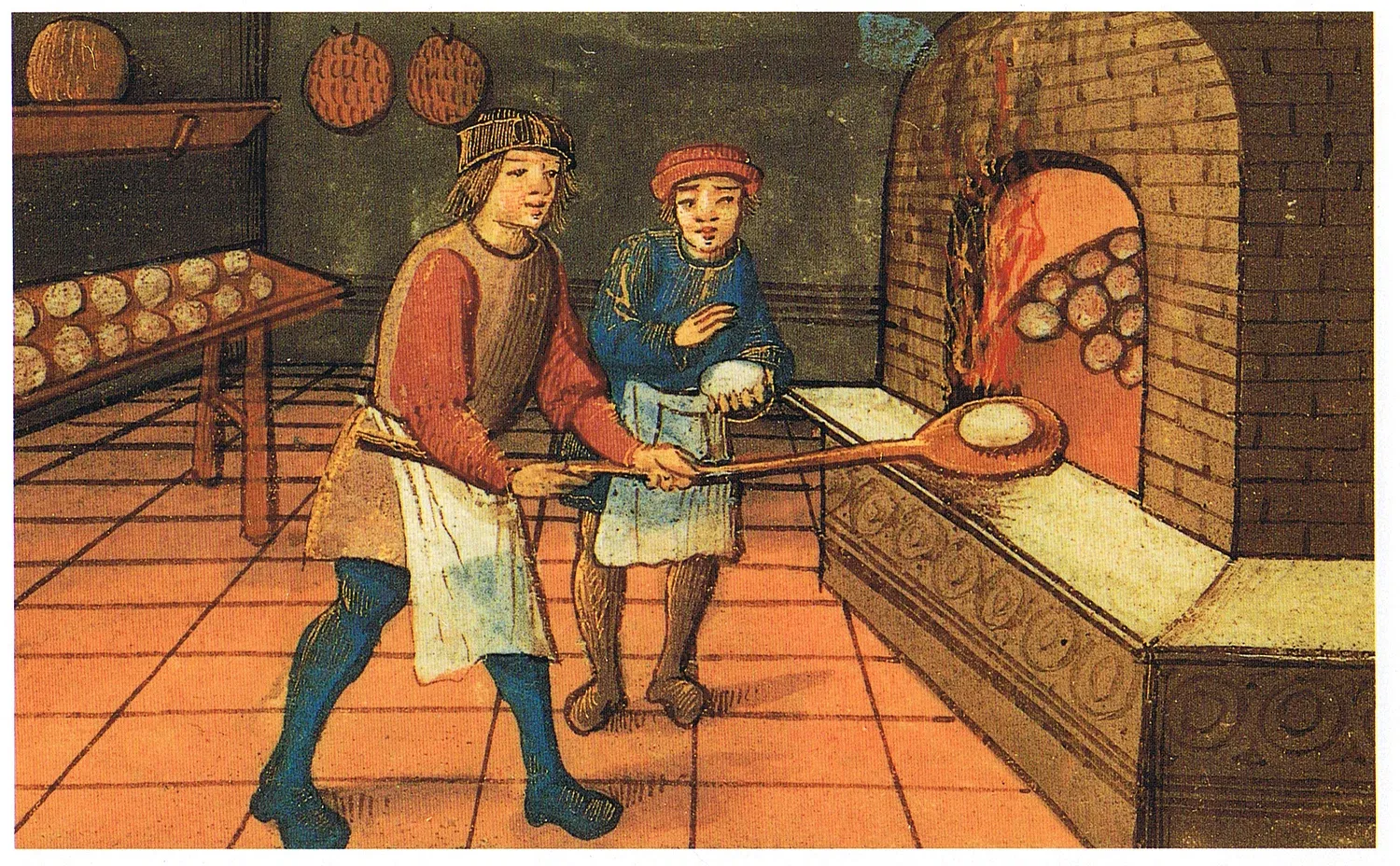
Do I need to add that the best bread is baked without preservatives or other additives? I am one of the many who occasionally has suffered gastro pains from industrial scale U.S. bread, but I have never had that in Europe. Below is a fresco from Roman Pompeii showing the distribution of bread at the House of the Baker, AD 40-79.
